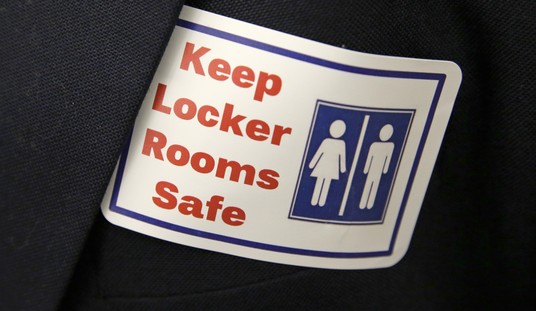Many of us admire eagles. The Bald Eagle is our national symbol, after all; it was so chosen in part for its regal bearing, its magnificence - a fitting national symbol. But all raptors are amazing birds, from the Golden Eagle and the Steller's Sea Eagle to the soaring hawks so common across the United States. So when people learn how many of these great birds are destroyed by wind power farms every year, it's upsetting.
These legitimate concerns about raptor deaths aren't new, of course. People have known about them since the first of these big, ugly windmills started going up. And we also know that the United States Fish & Wildlife Service, whose job it is to keep track of these things, has been playing rather fast and loose with the numbers.
All this is in defense of an energy source that is low-density, intermittent, and not economically viable.
Read More: Wind Power May Be Putting Eagles at Risk of Extinction
Federal Fish and Wildlife Service Is Hiding Windmill-Related Eagle Deaths
Now it turns out it may be worse than we thought. It's not just birds; mammals, including bats, and even insects are affected by these things.
Fresh insights into the ecological devastation caused by onshore wind turbines around the world are contained in a shocking new paper published last month by a group of ecologists in Nature. The paper is paywalled and has attracted little mainstream media interest, but it highlights research that illustrates that the effect of utility-scale wind energy production “can be far-reaching and sometimes have large and unexpected consequences for biodiversity”. An annual figure of around one million bats are killed in the countries with the highest number of turbines, but harmful effects are seen in many other parts of the ecosystem. The number of top predators such as jaguars, jungle cats and golden jackals can be changed by turbines in tropical forest gaps, leading to the “possibility for cascading effects” along similar latitudinal levels.
Bats are generally small and extremely agile flyers, not to mention that bats of the insectivorous superfamily Rhinolophoidea, which the echolocating North American bats belong to, have the added advantage of a built-in radar to help them avoid obstacles. If you've ever watched a bat flitter through a dark forest in the night, it's amazing how deftly they maneuver. But the windmills are still killing them. They are killing and displacing many animals, and like the U.S. F&WS, we just don't know how many.
It's not just the windmills themselves. It's all that it takes to put them in place and maintain them.
In short, the science team notes that turbines can kill birds, bats and insects, change animal behaviour, physiology and demography and alter ecosystems. The installation of wind turbines invariably results in habitat degradation, but it is regions rich in biodiversity with minimal existing infrastructure that suffer the most. The authors state that wind facilities “are recognised as an important driver for losses and degradation of irreplaceable habitats that are important for conservation.” Such areas, of course, can be found in the windy highlands of Scotland. For City-dwelling eco zealots, it is a case of out of sight, out of mind. Net Zero is all about money and power – bats and eagles have neither.
That last phrase is key. The climate scolds and environmental extremists who push for these programs rarely, if ever, live near them. It's a particularly cruel and cynical kind of NIMBYism, with people who shriek out how much they care for an environment they've never seen except on a phone, tablet, computer, or TV screen. But those of is who live out in the environment have to look at these things and live with them.
And, as we find out more and more about every day, the wildlife all too often dies by them.
Fortunately, the entire wind energy scam seems to be winding down. More and more wind farms are reaching the end of their usable lives and aren't being rebuilt.
Read More: Land of the Setting Sun: Japan's Green Energy Failures
Now, every method we use to extract and produce energy has a cost. Even the most modern, high-tech drilling operation is going to displace or kill some wildlife, as will mining operations that extract everything from metals used to build facilities and equipment to the fuel for nuclear power. The bill always comes due, but in the case of modern, high-tech drilling operations as well as mining, we've pretty much minimized it.
There's another thing: Our oil, gas, coal, and nuclear power sources produce reliable, affordable, constant energy at a pretty low environmental cost. No eagles with broken wings. Windmills, wind power, on the other hand, produces intermittent, unreliable, low-density power, at an environmental cost that we are still working to understand, and which at every turn seems to be worse than we thought.
Of course, hypocrisy is nothing new for the climate scolds and the political left (but I repeat myself.)














